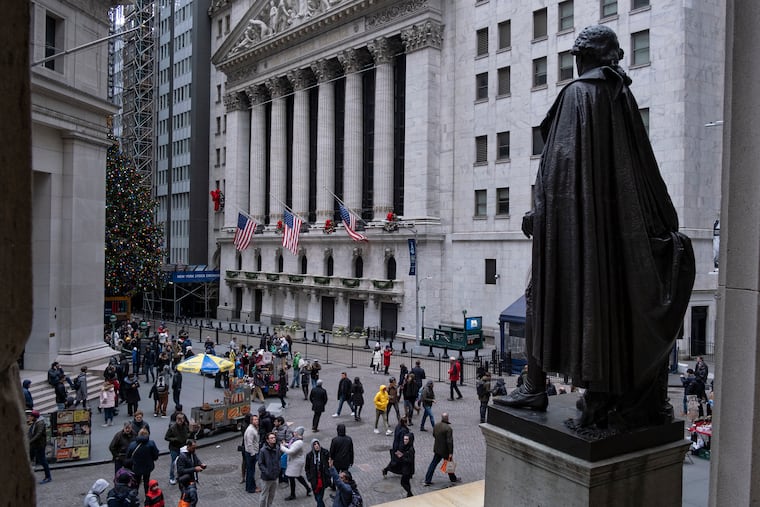Will the U.S. economy lift the working class in the next decade? Depends on your 2020 vote. | Opinion
The 2010s are over. Judging the decade by the economy’s performance, it was a pretty good one, especially for the wealthy.

The 2010s are over. Judging the decade by the economy’s performance, it was a pretty good one. That goes especially for the wealthy.
Working-class Americans are enjoying the better economy, but that’s recent history and comes after decades of lost economic ground. It will take a couple of decades or more of good times for them to catch up. Yet, even that will require economic policy to do a 180.
The 2010s began ominously. The economy had just suffered the worst financial crisis and economic downturn since the Depression of the 1930s and was struggling for life. The unemployment rate hovered around 10% and nearly a fifth of the labor force was either not working or not working as much as people wanted.
Deft economic policymaking turned things around. The Obama administration’s massive fiscal stimulus, which included temporary tax cuts and government spending increases, jump-started the flat-lining economy. Bailouts for banks, homeowners, and the auto industry at the height of the crisis were very unpopular but necessary to salvage the rest of the economy.
The Federal Reserve gets the most kudos. It pulled all the tools out of its kit and created some new ones. Interest rates went to zero and remain historically low.
The economy has been growing ever since. This past summer, the expansion became the longest in the nation’s history. Back in 2010, if you had wanted to bet me that the economy would make it to 2020 without a new recession, I would have taken that bet.
Job creation is the most impressive economic success of the 2010s. The decade is ending with unemployment at a 50-year low of 3.5%. Right now, there are more open job positions than unemployed people to fill them — a rarity. Wage growth has picked up, albeit at a slower pace than is usual for a tight job market.
The wealthy have been the biggest beneficiaries of the better economy, due particularly to the stratospheric stock market. Stock prices have risen fivefold since hitting bottom during the financial crisis and added an astounding $25 trillion to the wealth of investors. However, only about half of Americans own stocks, and only about one-fifth own enough that the rising value makes a meaningful difference to their financial well-being.
Low interest rates propelled stock prices, as have President Donald Trump’s large tax cuts, particularly for publicly traded multinational corporations. The wealthy also enjoy much smaller tax bills as a result of those tax cuts.
The wealthiest 1% of Americans now own almost one-third of all the nation’s wealth, and the wealthiest 10% own two-thirds of the wealth. The poorest half of Americans effectively own nothing. Most of these folks would be unable to scrape together enough cash to pay for a typical household emergency such as a busted water heater or a leaky roof.
There have always been haves and have-nots, but the gap between them is about as wide as it has ever been and set to get wider.
Historically, the way the working class built wealth was through homeownership. By paying on a mortgage each month, they were investing in an asset — their home — that provided a high return. But homeownership declined in the 2010s, as it did in the previous decade. With housing now in extraordinarily short supply, rents and house prices are rising quickly in much of the country. Saving for a down payment and purchasing a home are impossible for more and more families.
The working class will remain behind the financial eight ball if the productivity slowdown of the last decade persists. Productivity growth is the fodder for growth in wages, but during the 2010s, productivity increased by only 1% a year, less than half the pace of the previous half-century.
There is no single explanation for the productivity slowdown, but President Trump’s anti-globalization stance is not helping. Trade wars and restrictions on immigration, hallmarks of the president’s policies, reduce competition and the new business formation and innovation needed to drive stronger productivity gains.
The social safety net underneath the working class also looks increasingly tattered. This includes Social Security, Medicare, Medicaid, and yes, Obamacare. The government’s finances and thus its wherewithal to consistently fund these entitlement programs have dramatically eroded in the 2010s. The principal culprit is President Trump’s tax cuts, which have undermined government revenues and made trillion-dollar annual budget deficits the norm.
We need to flip current economic policy on its head. Instead of paying less in taxes, the wealthy need to pay more. Instead of pulling away from the world on trade and immigration, America needs to embrace the world more tightly. How well the economy performs in the 2020s, particularly for the working class, will depend critically on how we vote in 2020.